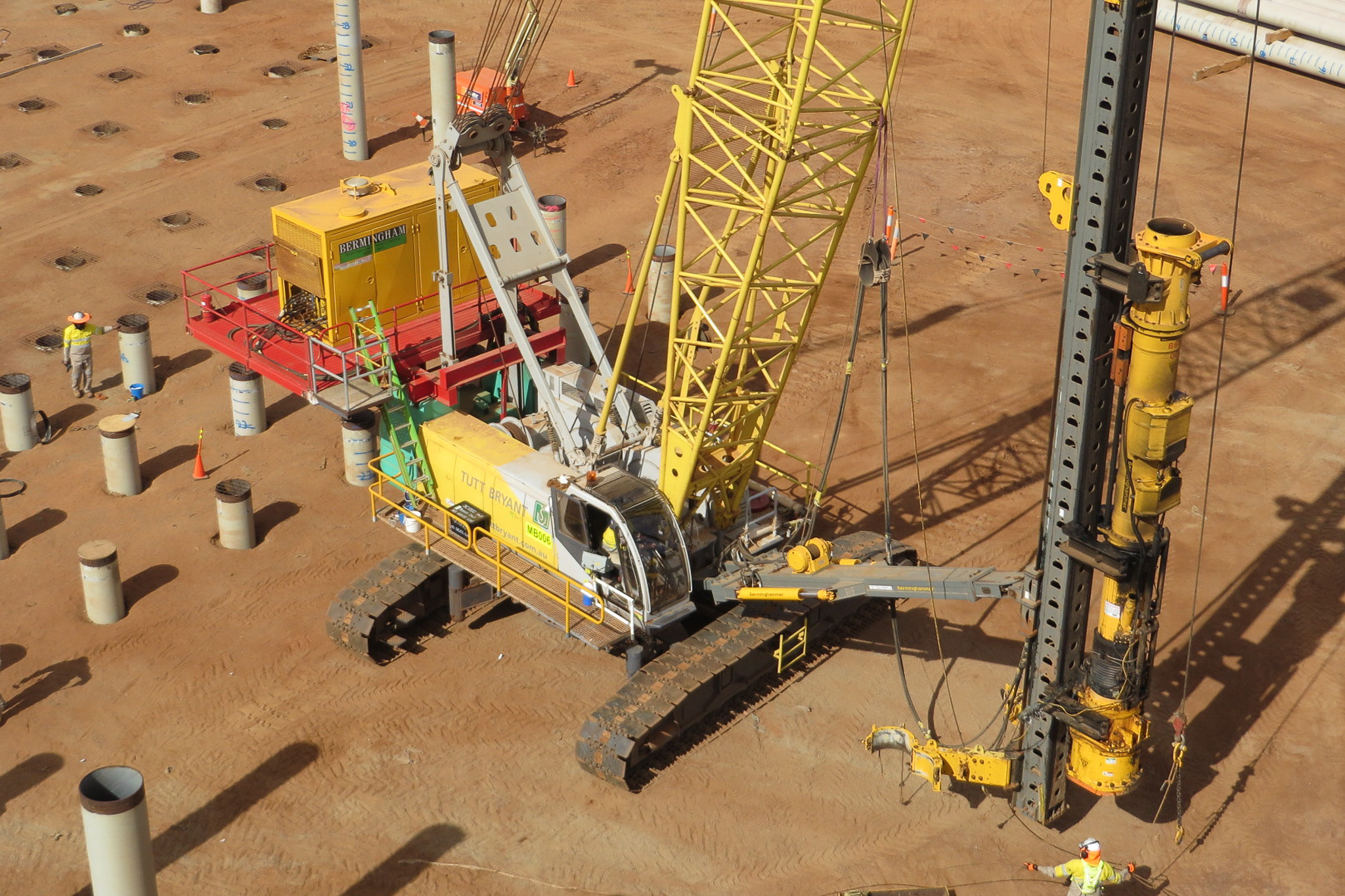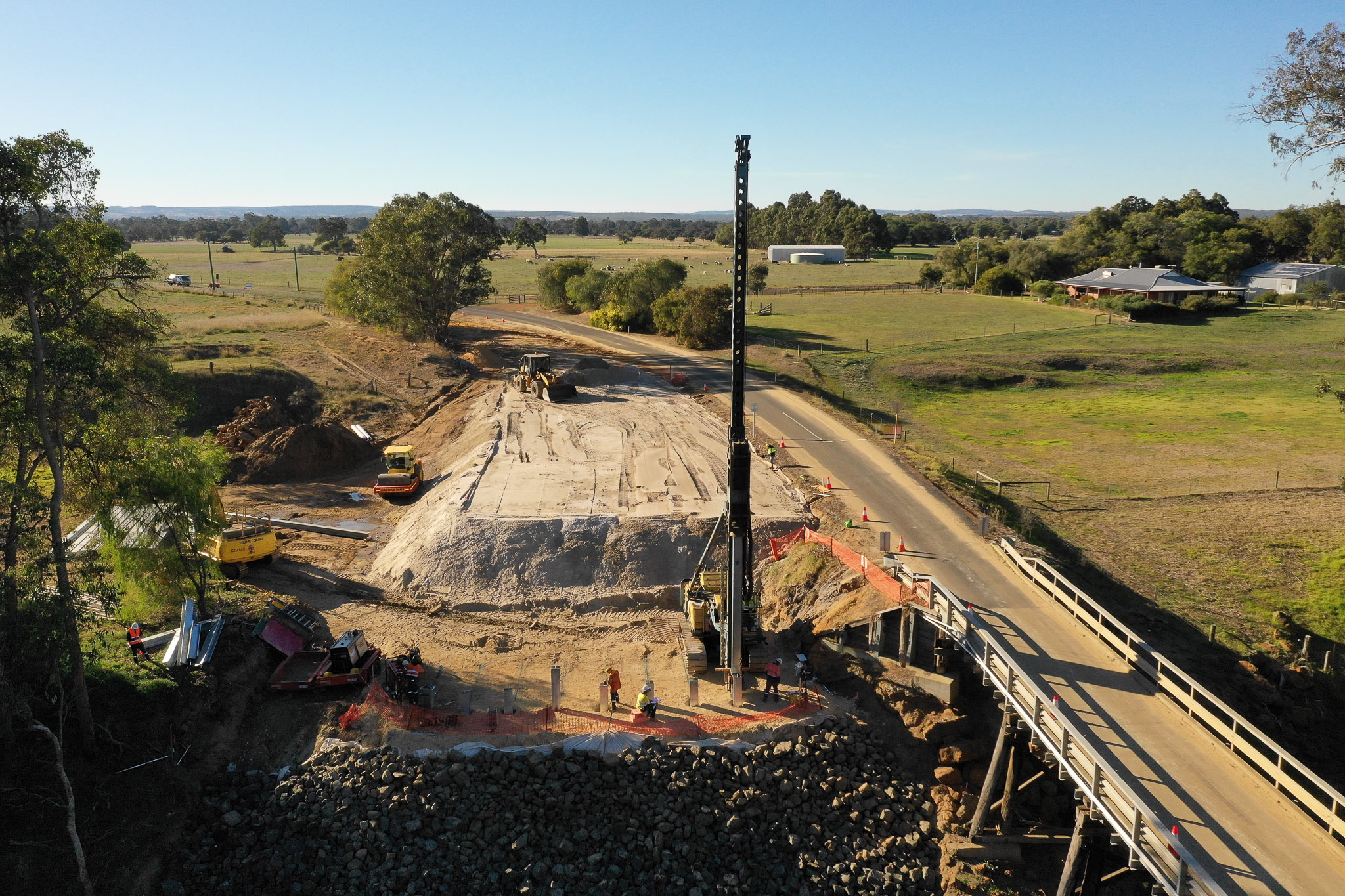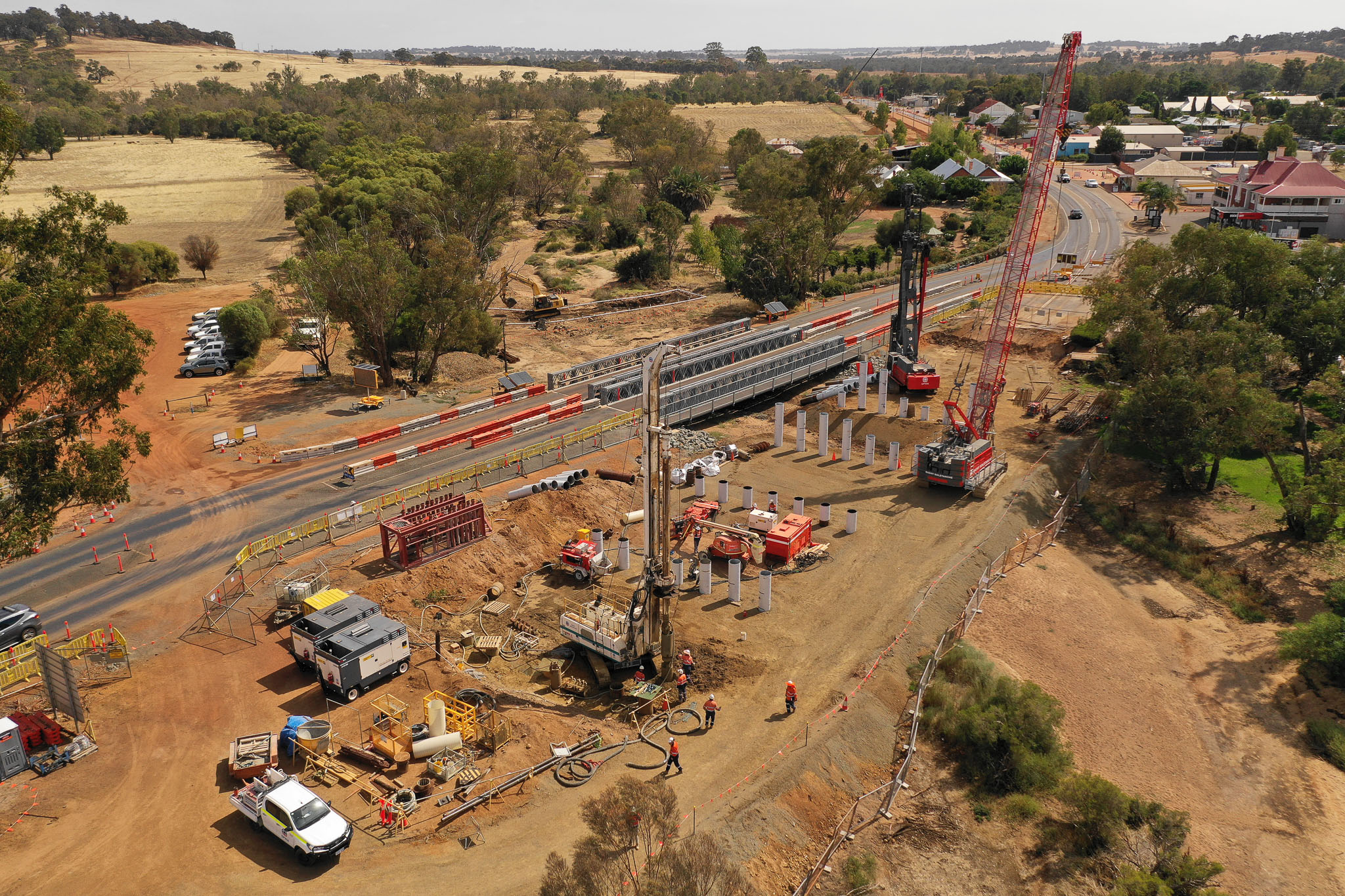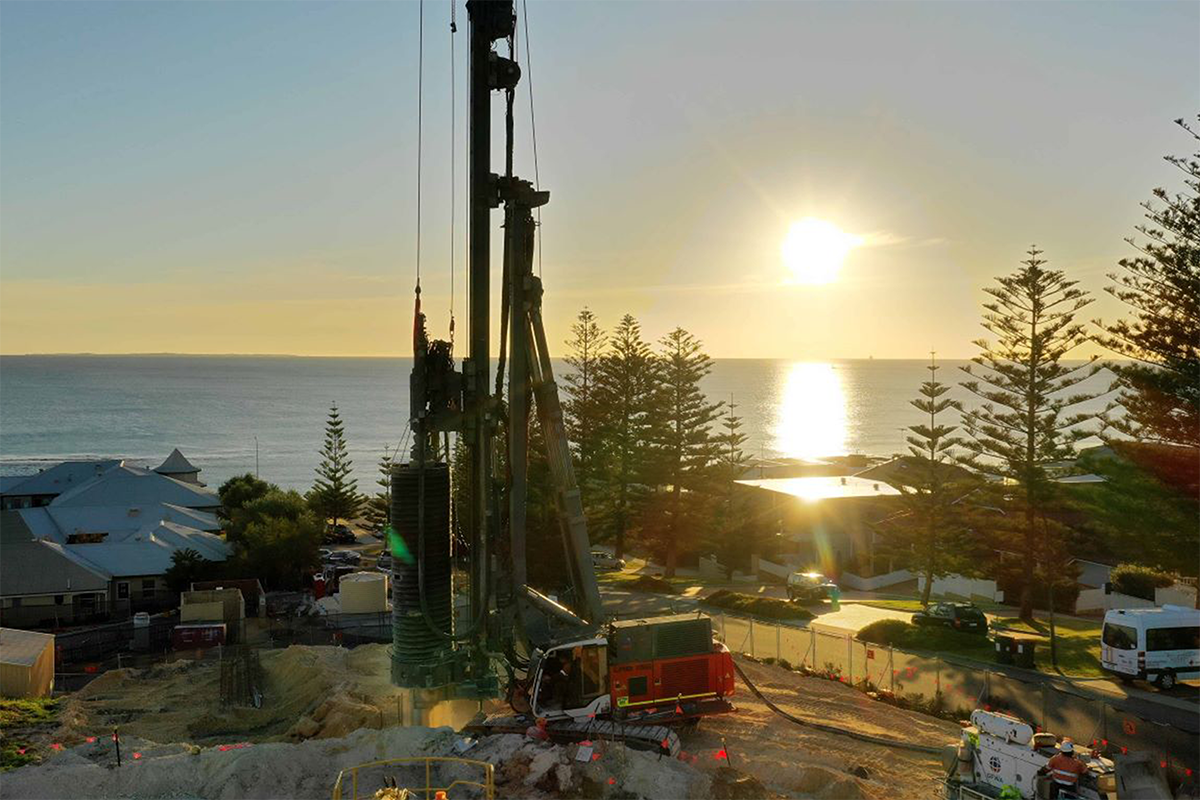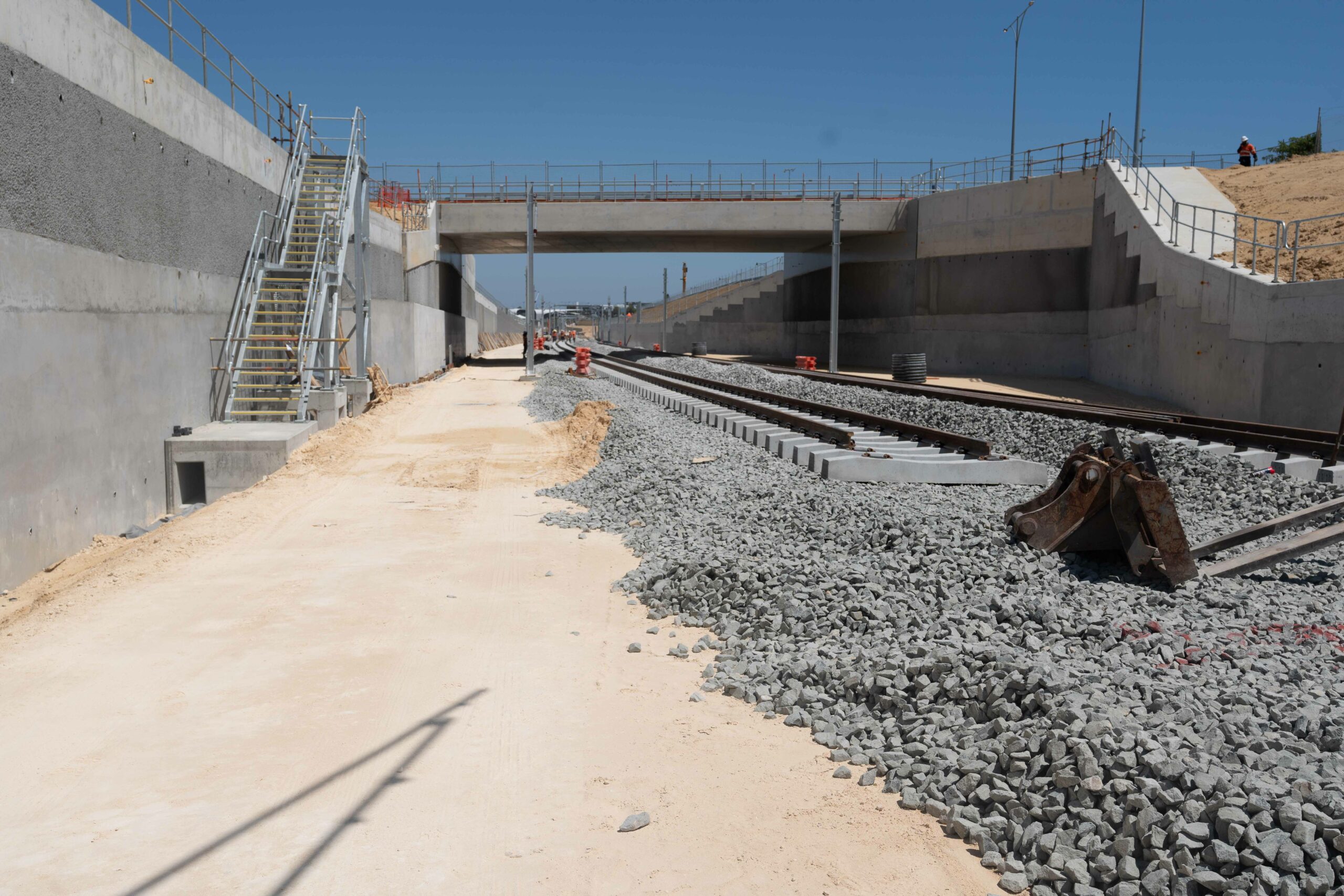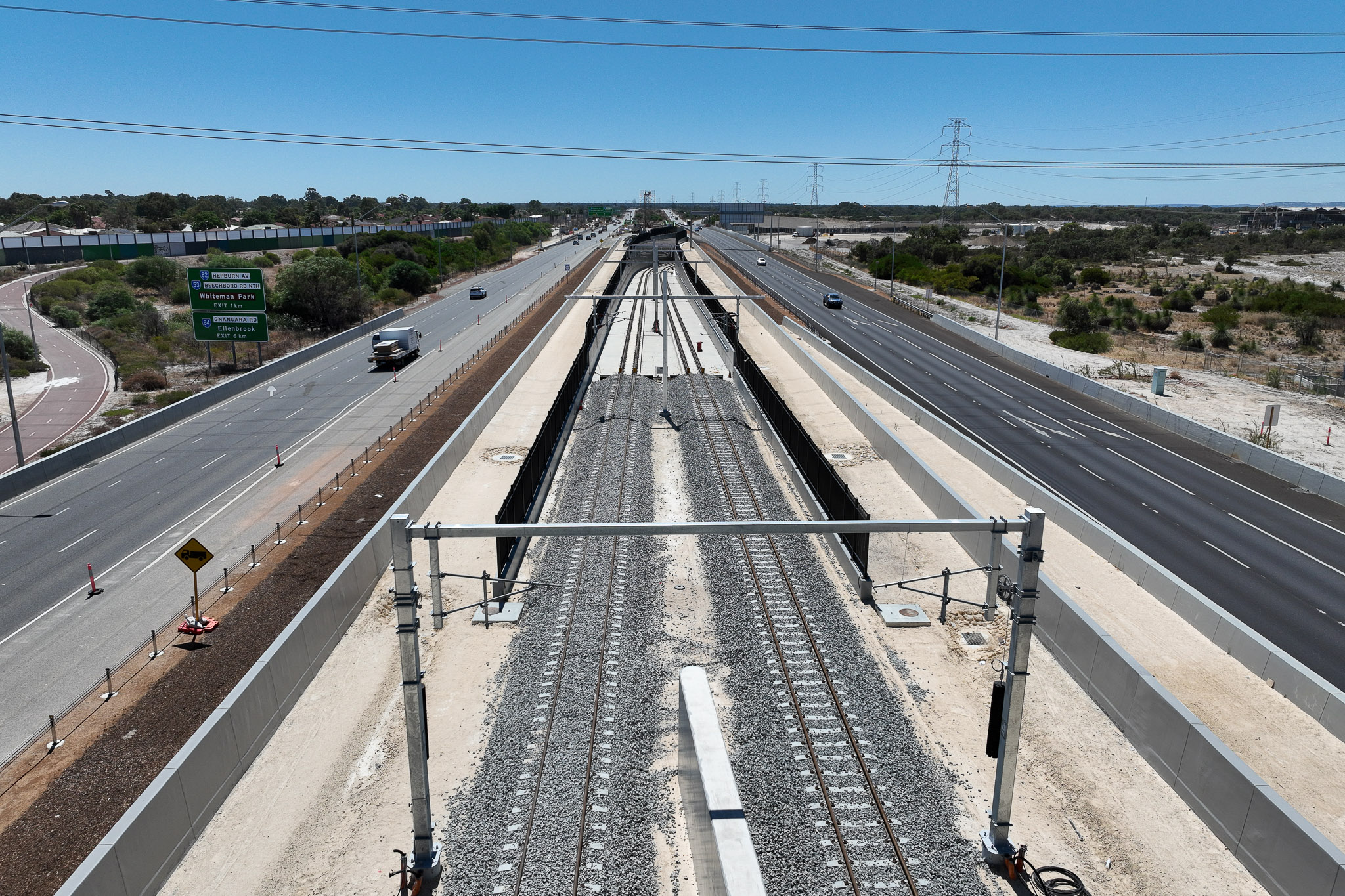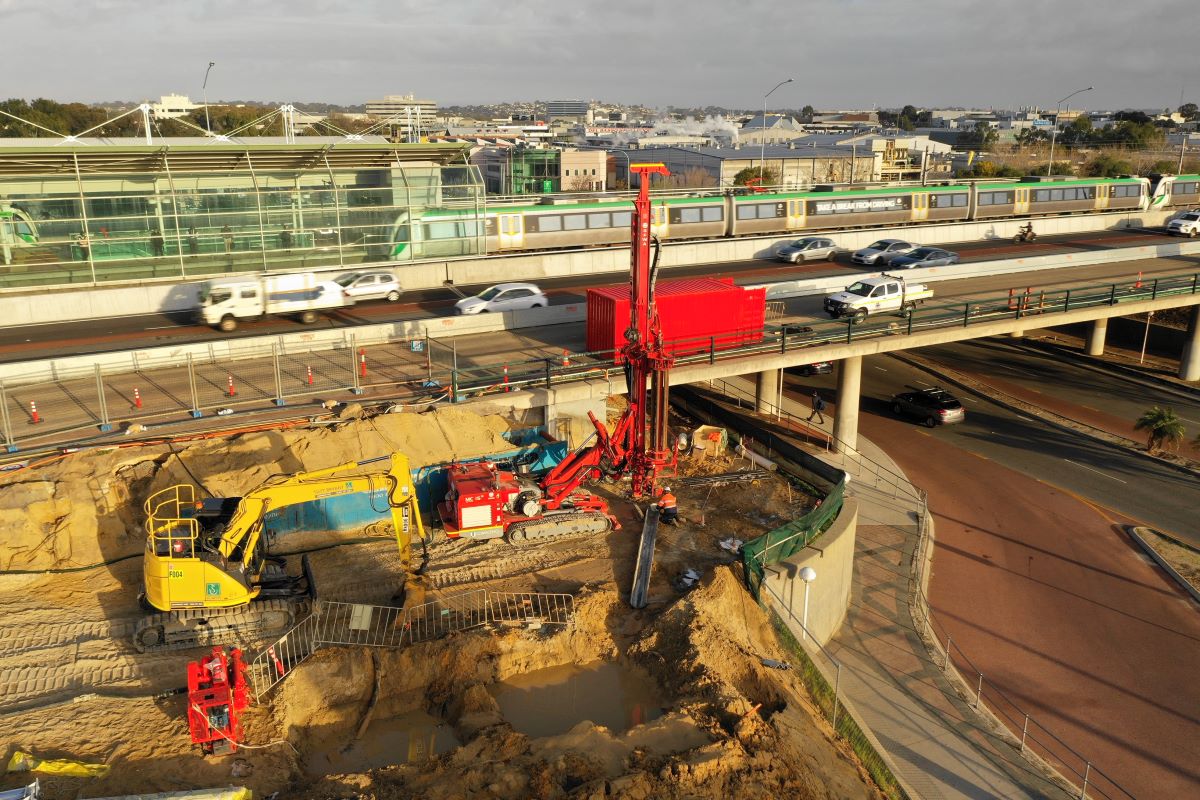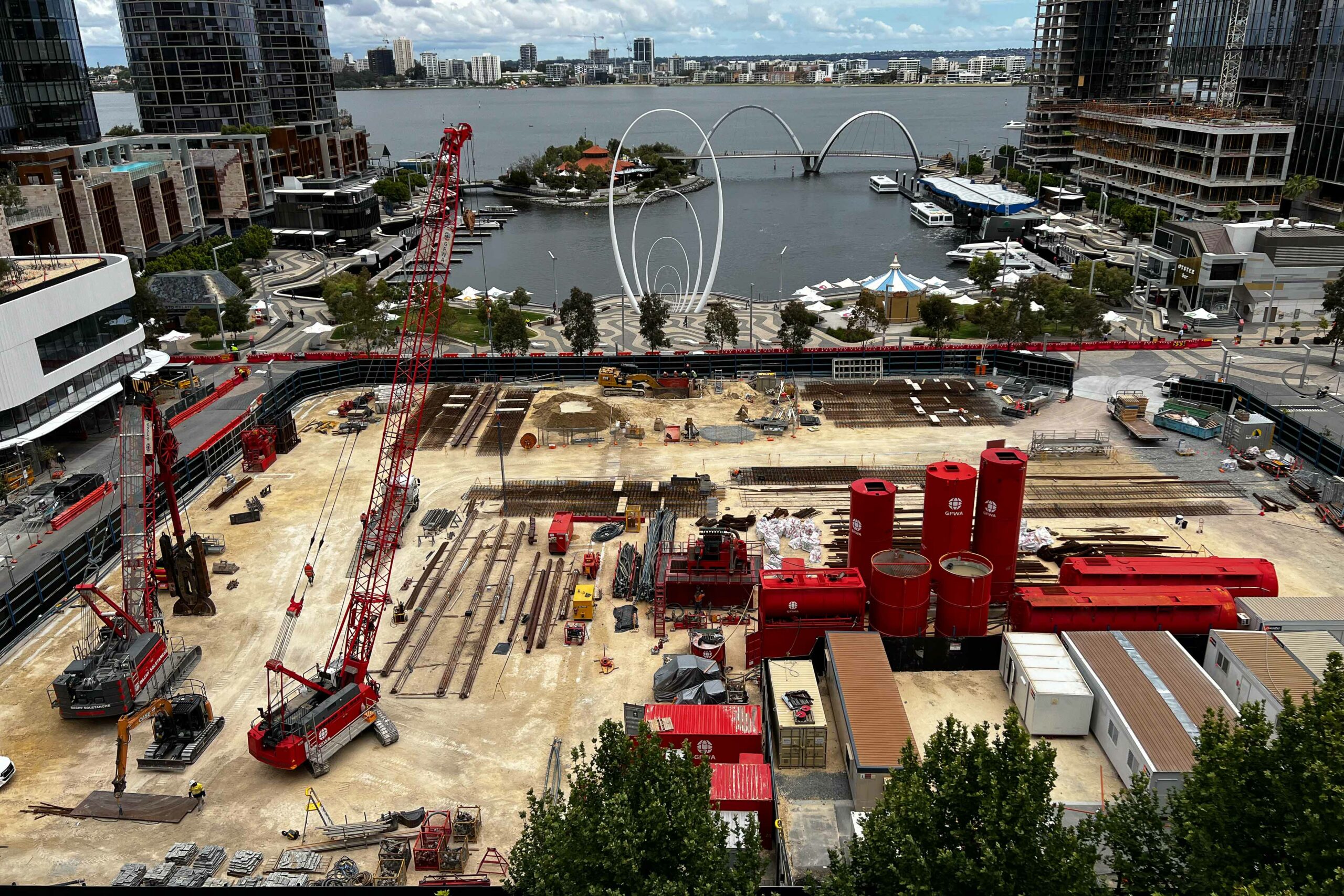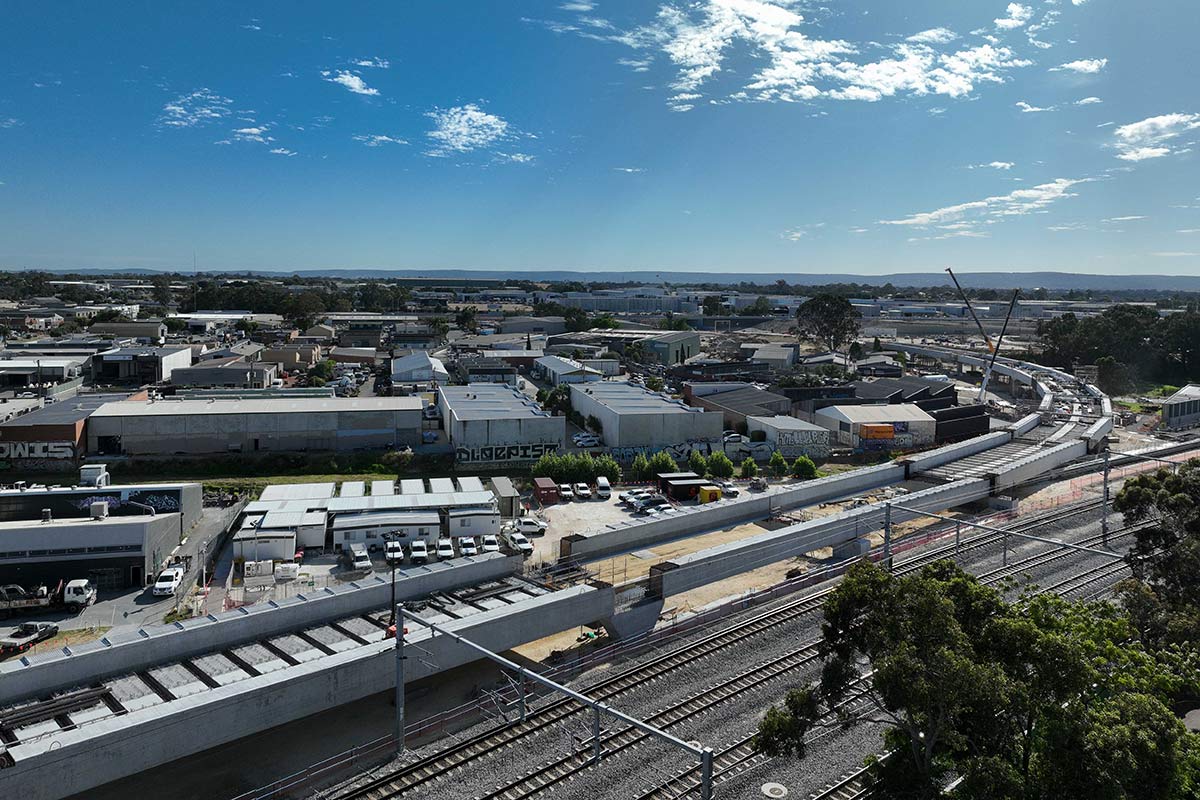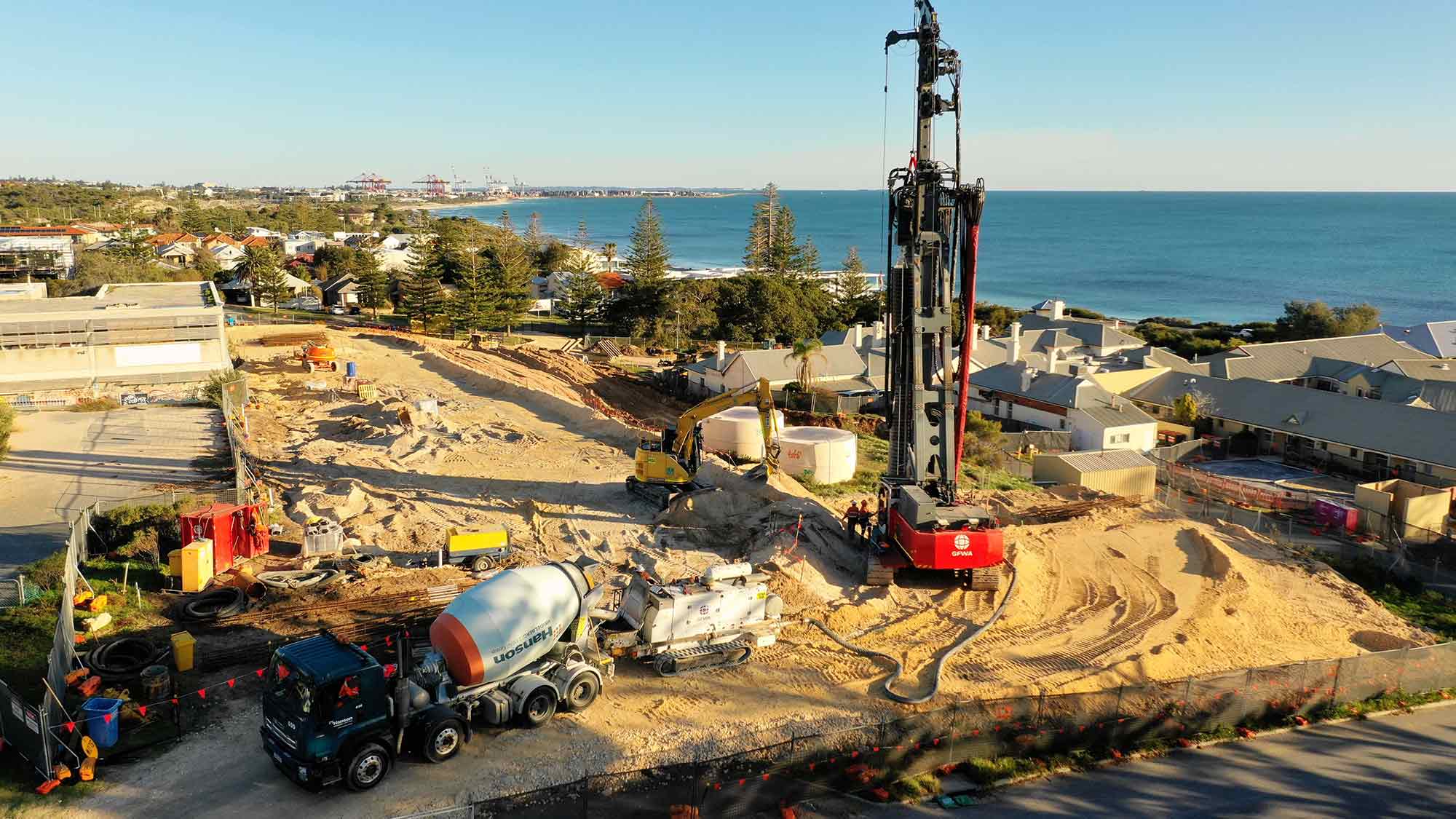Project Description
Reliable Driven Pile Services for Durable Foundations
GFWA excels in driven piling and has completed numerous projects across Australia.
Driven piles, or displacement piles, ensure foundation stability. Installed by vibrating or pushing into the soil, they compact and displace surrounding soil, providing a robust solution for various construction projects.
Our processes
Stage 1: Site Preparation
The construction site is cleared and levelled, with the locations for the driven piles marked. Access for pile driving equipment is ensured, and any obstacles are removed. The site preparation ensures that the area is ready for the arrival of pile driving equipment.
Stage 2: Pile Selection
Appropriate piles (concrete, steel, or timber) are selected based on the load requirements and soil conditions. The selected piles must meet the project specifications and be capable of supporting the required loads. The piles are transported to the site and prepared for driving.
Stage 3: Pile Driving
Piles are driven into the ground using a pile driver until they reach the required depth or refusal. The driving process involves repeatedly striking the pile with a hammer or using a vibratory driver. The driving process compacts the soil around the pile, increasing its load-bearing capacity. The depth and resistance of the pile are monitored to ensure it meets the design specifications.
Stage 4: Cutting and Capping
The tops of the piles are cut off to the required level, and pile caps are installed if necessary. The pile caps distribute loads from the superstructure to the piles, ensuring a uniform load transfer. The cutting process involves trimming the pile heads to the specified elevation and preparing them for connection to the foundation system.
Stage 5: Load Testing
Load tests are conducted to ensure that the piles meet the design load requirements. This involves applying a test load to the pile and measuring its response. The tests confirm the piles’ ability to support the required loads and provide data for any necessary adjustments to the design.
Stage 6: Finishing
The pile heads are finished and integrated with the foundation system of the superstructure. This involves connecting the piles to the foundation elements and ensuring a smooth transition between the piles and the rest of the structure.
Stage 7: Quality Control
The piles are inspected for alignment, depth, and structural integrity. Non-destructive testing methods such as dynamic load testing or integrity testing may be used to assess the quality of the piles. Ensuring that the piles meet all design and safety standards is essential for the success of the project.
Related projects

